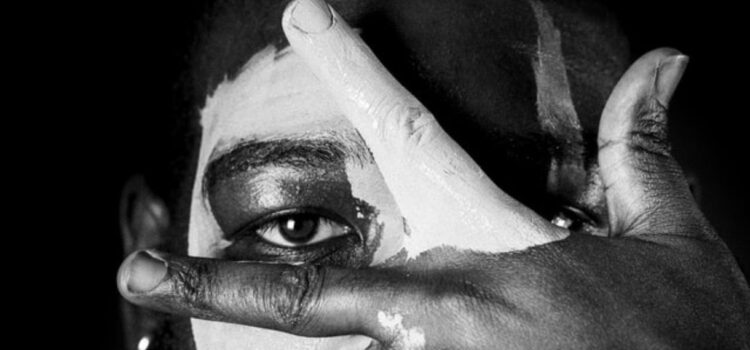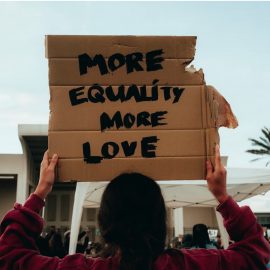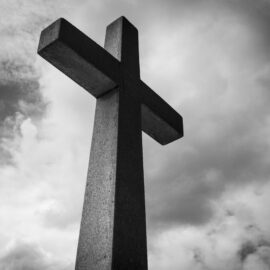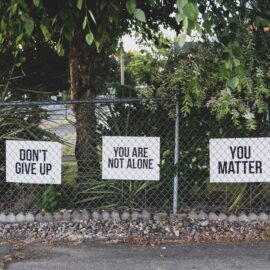

This article is an excerpt from the Shortform book guide to "Caste" by Isabel Wilkerson. Shortform has the world's best summaries and analyses of books you should be reading.
Like this article? Sign up for a free trial here .
What is a racial caste system? How did an arbitrary trait such as the color of skin come to shape the destinies of millions?
Racial caste system is a hierarchical social order where skin color is used as a tool to designate people’s rank in society. However, race is an arbitrary characteristic because it was invented as a means to stratify society and justify different standards of living.
Keep reading to learn about how the racial caste system was created.
Racial Caste System Explained
The word “race” and the derivatives of “racism” and “racist” are so ingrained in our cultural vernacular that we may not understand the true nature of those words. Race originated as a means to differentiate dominant power from subordinate inferiority based on skin color, and over centuries, it has become a weighted term. But the meaning the term attempts to convey is arbitrary because the distinction is arbitrary.
Consider the following analogy:
During the creation of civilization, the people with the most power were short. They saw a community of tall people and realized they needed to dominate this group to maintain their superior position. Thus, they developed beliefs about tall people and used them to signify their lack of worth. People who were six feet tall or taller became “unattractive” and “gangly.” The “talls” were suddenly only good for reaching things or playing sports. The dominant group also made tall people feel ashamed of their long legs, long arms, and lengthened torsos and necks.
The “shorts” used these stereotypes to categorize the talls as less than so they could restrict their behaviors. Shortness became the standard of beauty. The shorts modified society to accommodate their needs. For example, houses, clothing, and transportation were designed to serve short people and create barriers for tall people to gain resources and comfort. The shorts took the position as the dominant caste, and for the rest of time, tall people became “others,” monsters, and an inconvenience.
This scenario seems ridiculous, but the functioning of the racial caste system is no different. There is no way for a tall person to become short and bridge the gap to a valued life, just as there is no way for someone to change the color of their skin. But this type of random categorization is exactly what happened when the Europeans used the dark African skin to distribute different levels of value to each group. They called it race, and the rest is history.
To further understand the arbitrary nature of race, we only have to look at the term “Caucasian” as the racial designation for the dominant caste. The term Caucasian has no basis in heritage or skin color. A German doctor coined the phrase in 1795 after studying several skulls for medical research. One skull stood out because he liked the shape of it. He thought the contours were beautiful, and because the skull had come from the Caucus Mountains of Russia, he started referring to all Europeans as Caucasian. There is no scientific basis, just one man’s opinion, yet today, the term represents the dominant caste and their power therein.
The Reality of Race
In a racial caste system, skin color is tool used to separate people and justify different standards of living. However, race in itself is an arbitrary characteristic. A study of human genomes 20 years ago showed that all humans are 99.9% the same genetically. Genetic scientists discovered that every person on Earth descended from a handful of tribes in Africa, and over 100,000 years, the different generations migrated out of Africa and into other lands. This means that the distinctions we hold as truth based on the artificial idea of race are a distortion of our true ancestry.
The main problem with the racial caste system is how certain characteristics are attributed to different races and become fact about each member of that race. When we look at someone and see a different skin color, hair texture, or features, we automatically make assumptions about what that person is capable of and where they belong in society. These assumptions are at the heart of caste designations. It would be more accurate to refer to someone who discriminates against another race as a casteist, not a racist. Race is what you see. Caste is what you believe.
But because our culture is so wrapped up in race, the derivative terms of racism and racist have come to stand for casteist ideals. Therefore, those in the dominant caste are loath to speak of race for fear of being called a racist. They resent conversations that force them to address race, which hinders constructive discussions that could help right this linguistic wrong.
How Casteism Differs From Racism
Racism and sexism were once similar in what they signified—one group that uses their social power to oppress another group. However, in the last century, racism has become synonymous with beliefs, actions, and character. Today, if you’re a racist, it means you hate people who are not like you and condone oppression. This misunderstanding is why the dominant caste flinches at the term. Rather than a mere power construct, racism has become a character flaw that triggers people to defend themselves and their behaviors.
You don’t have to burn crosses, use racial slurs, or discriminate against someone because of their skin color to be a racist. Racism is the mere perpetuation of stereotypes and beliefs that separate people, which stem from the original narrative of caste. If racism were understood as a byproduct of casteism, society might actually be open to acknowledging racial problems.
Instead, this skewed sense of racist ideals keeps the drive for change focused on the wrong things. Rather than fighting the caste system that creates the separatist beliefs, people attempt to identify the bad apples who perform hate crimes. If people aren’t actively discriminating against someone, they feel safe that they’re behaving properly and lack an incentive to change their inherent biases about the subordinate caste.
The only way that real equality and justice will happen in America is if we stop looking for the red flags of racism and start focusing on the mindsets and microaggressions that continue to hold the lowest caste in place. We must recognize our biases as elements of a caste because we all unconsciously participate in the American caste system. When we attribute a black woman’s promotion to affirmative action and not merit, we perpetuate caste. When we approve of a white teenager managing lower caste employees twice their age, we perpetuate caste.
Casteism is not about hatred or violence, but rather the assumptions and behaviors we accept as “just the way things are.” We must stop believing that the racial caste system of our country is a natural order of things. We must accept people for who they are, rather than what we believe their physical features mandate. We can be casteist without being racist, and if we’re honest, we all uphold that original narrative in one way or another.

———End of Preview———
Like what you just read? Read the rest of the world's best book summary and analysis of Isabel Wilkerson's "Caste" at Shortform .
Here's what you'll find in our full Caste summary :
- How a racial caste system exists in America today
- How caste systems around the world are detrimental to everyone
- How the infrastructure of the racial hierarchy can be traced back hundreds of years






